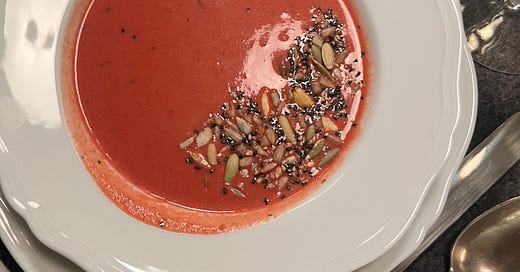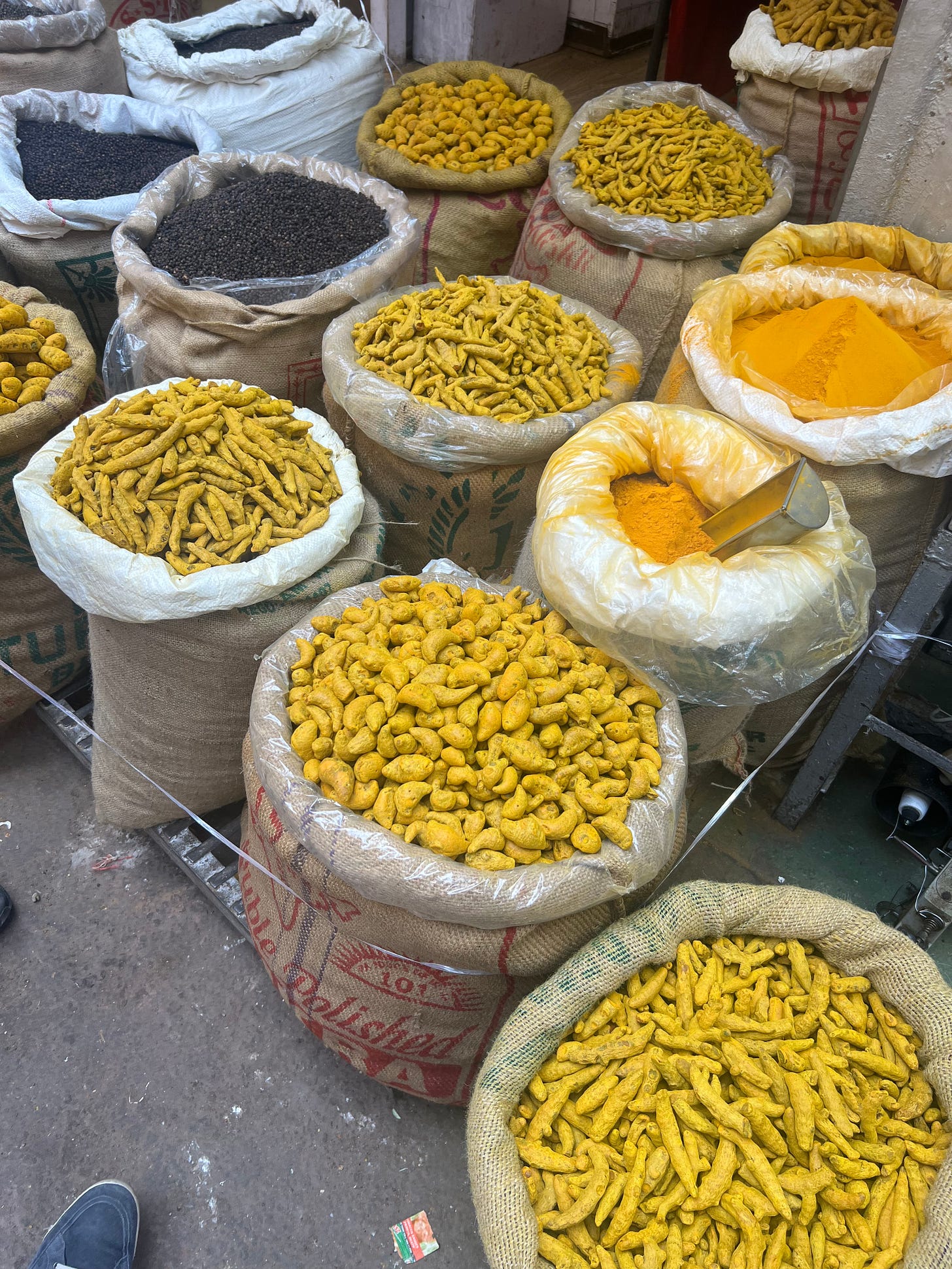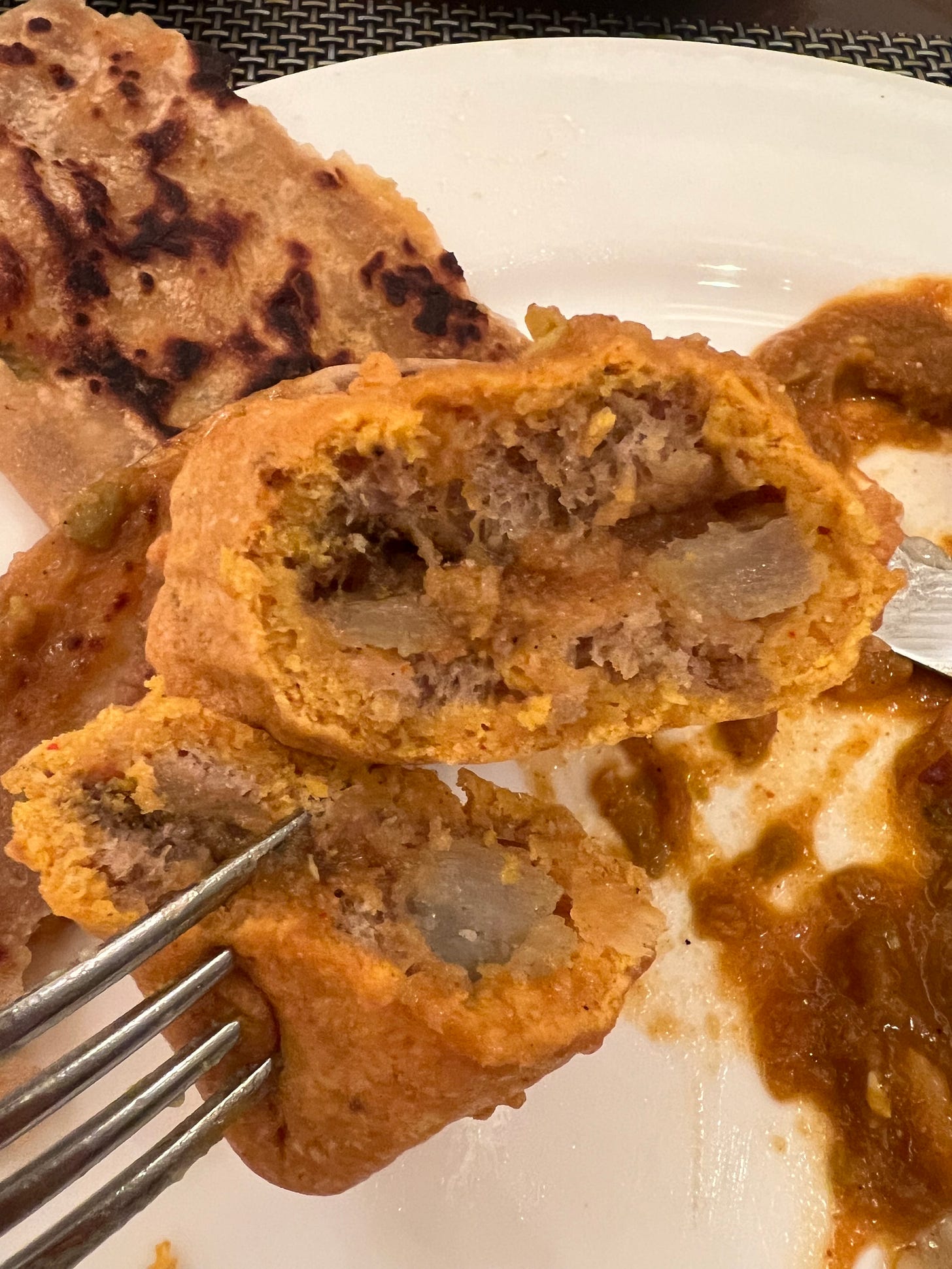I am writing this week’s newsletter from New Delhi. It’s early morning on the third day of our two-week tour of India, a belated 50th birthday trip for Nate. He’s dreamt of coming here forever. Our itinerary is pretty typical. Today we are heading from Delhi to Agra to see the Taj Mahal. Tomorrow it’s on to Jaipur. Then Udaipur, Goa, and finally, Mumbai before we return home.
As anyone who has been to India will tell you—I’ve been here briefly once before, for a long weekend in Mumbai in 2007—this is a wonderful and difficult place. A friend described it by saying there’s just so much of humanity on display—the good, the bad, and the puzzling. I imagine visitors to New York City feel the same way. Even though we’ve been moving around so far in a rich, western, colonial bubble, it’s still a challenge to take it all in. The chokingly poor air quality doesn’t help.

We happened to be here during an historic, auspicious, and depending on whom you speak to, controversial time. On our first full day in India, a temple in the northern city of Ayodhya built for the beloved Hindu god Ram was consecrated in a ceremony broadcast on national television. Saffron colored flags lined the streets and decorated vehicles. Giant screens were set up in public squares for everyone to watch. Stages were erected throughout Delhi, old and new, for speeches and celebratory performances. Long lines formed outside Hindu temples, from which observers emerged with saffron paint on their foreheads and saffron sweets in their hands. All the flower arrangements in our posh hotel were a bright yellow-orange to mark the occasion. More than one person told us it was a once-in-a-hundred year celebration.
But there were also protests. We happened to be taking a guided tour of the markets of Chandni Chowk in Old Delhi when the actual consecration ceremony was going on. Although we were at times overwhelmed by the commotion of the streets in the narrow alleyways of the old spice market, our guide kept commenting how he’d never seen it so empty due to the celebrations. Stray dogs and the occasional cow or monkey jockeyed for space on the roads with people carrying giant sacks of dried spices on their shoulders, on various bicycle-pulled vehicles, and on cars and trucks. Occasionally the normal chaos was interrupted by disruptive groups chanting what we were told were pro-Hindu slogans. Our guide, Jibin, advised us to avoid any temples and gatherings.
Jibin explained that the new temple was built on top of a mosque toppled by anti-Muslim protesters back in 1992. The mosque itself had been built on the site of a Hindu temple centuries prior. These events were all the more resonant because Ram is said to have been born in Ayodhya. It took a supreme court ruling to decree the Hindu temple could stand. Monday’s consecration was the climax of a country-wide effort, an affirmation of the Hindu nationalism that has made prime minister Narendra Modi ever more popular. From what we saw on the screens and heard from chatty locals, Modi was clearly the star of this celebration, just as the New York Times reported.

Although another site was identified for a new mosque in Ayodhya, Muslims of course feel slighted. Again. Some Hindus are offended at how the new temple has been politicized by Modi, the consecration coming as it has just days before the national Republic Day celebrations on January 26 and the upcoming Indian elections. Turns out religion and politics are complicated everywhere.
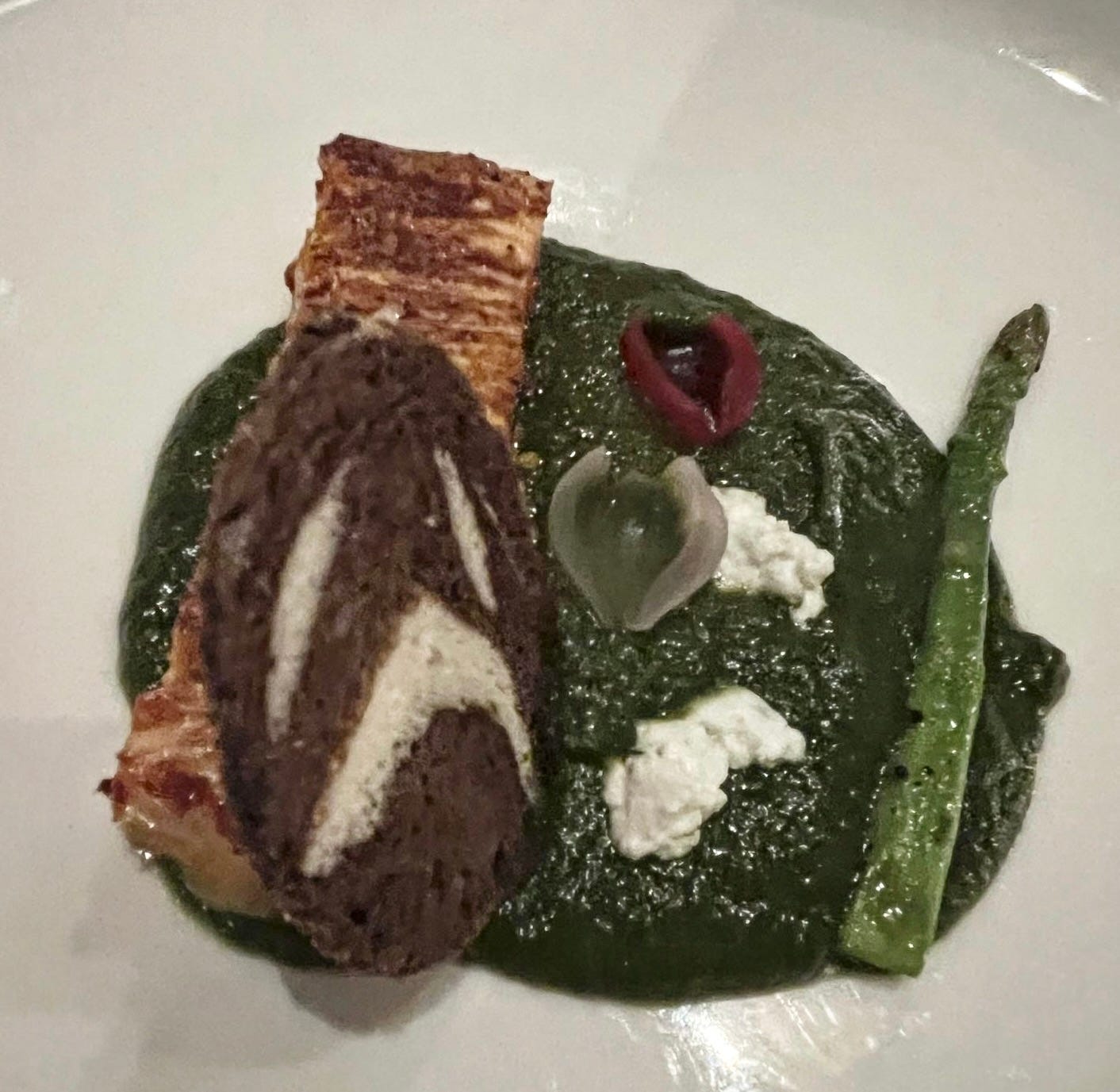
And then there’s the food. Last night as part of the vegetarian tasting menu at Indian Accent we had a deconstructed palak paneer. A fried block of housemade 100-layer cheese sat on a puddle of silken spiced spinach. With nods to Indian tradition, modernization, and contrasts, perhaps the many layers of that paneer could be seen as a metaphor for Indian society.
We’ve already eaten in a range of places, from market stalls frying parathas and samosas to globally recognized temples of gastronomy, the latter located in Delhi’s grand hotels. The rotating selection of dishes on the Indian side of our breakfast buffet have been a favorite place to explore, a kind of greatest hits of Indian food. (I am aware of how imperialist that sounds.) Idly, pav bahji, poha, akuri, uttapam, parathas, and various chutneys and pickles, are among the things we’ve enjoyed with our morning coffee. This morning something I’d never heard of before, bread pakoras—pieces of bread stuffed with spiced potato, dipped in chickpea batter, and fried—really stood out.
When I was in Mumbai years back, our guide was disappointed in the food we were eating in restaurants, so he decided to do something about it. He invited my friends and I to his mother-in-law’s home for lunch. We ventured out to a distant Mumbai suburb to feast on beautiful and delicious vegetarian food, lighter, more complex, and more subtle than anything we had been served in the city’s best restaurants. I’m sure that restaurant cooking/home cooking dichotomy still exists 15 years later. But we’ve got only restaurant meals to experience on this trip. Still, realizing that what we are being exposed to is a very small slice of a very small section of the Mughal restaurant food chapter of the great Indian recipe book, I’m already excited to get into my kitchen to try to understand it all better through cooking.
In the meantime, I wanted to offer you a recipe that I’ve made several times now for an exquisite beet soup you might call Indianesque. It would be right at home on a menu at one of the more contemporary restaurants we’ve eaten in here. It comes from the menu at Anita Jaisinghani’s fab Pondicheri restaurant in Houston, which thankfully she shared in her indispensable book Masala. Anita has been instrumental in helping us plan our Indian journey, along with my friends Roni Mazumdar, Chintan Pandya, Siddhaart Jala, and Rashmi Uday Singh. We are so grateful for their advice.
The soup is thick and rich without cream. The ginger flavor is pronounced. More than once people I’ve served it to have said it is the best soup they’ve ever had. I’ve made it with red beets, as written, but also with golden beets, which I bought by mistake. It is one of those recipes that’s quite simple to make, but through the magic of synergy, the ingredients produce something that’s more than the sum of their parts.
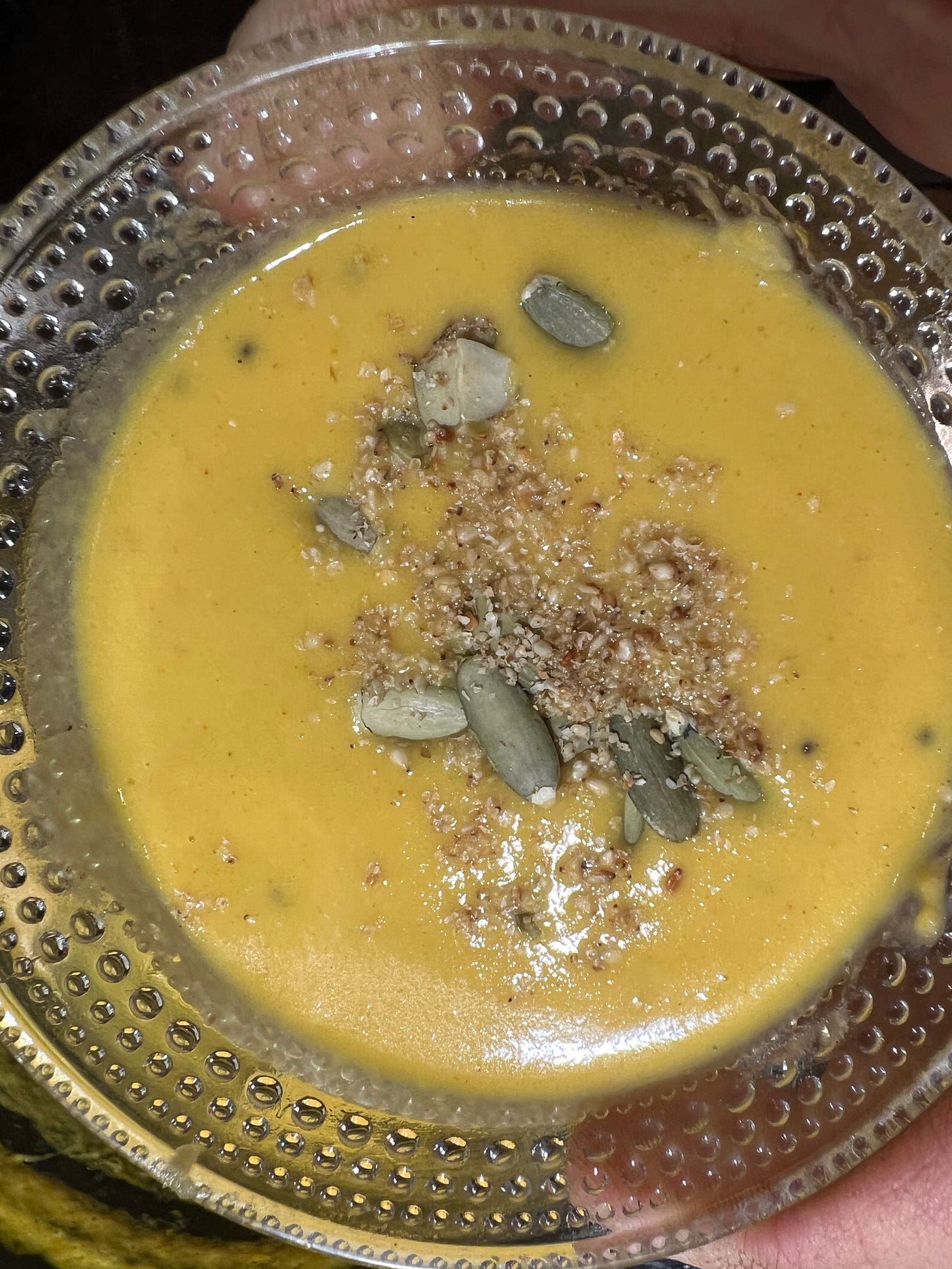
RECIPE: Anita’s Gingery Beet Soup
(Serves 5 or 6)
1/4 cup plus 2 tablespoons coconut oil
1/4 cup chickpea flour
1 1/2 to 2 pounds raw beets (about 3 or 4 medium), peeled and cut into 1/2-inch cubes
One 3-inch piece ginger, unpeeled and sliced
1 teaspoon Kashmiri chili powder, or another mild red chili powder
1 cup coconut milk, fresh or frozen, if you can find it, canned if you can’t
1 teaspoon sea salt, plus more, to taste
1 teaspoon black or brown mustard seeds
About 20 curry leaves, chopped
A selection of fresh herbs (purslane, cilantro or mint) and/or toasted seeds (sesame, pumpkin, or flax), for garnish (optional)
In a large saucepan, heat the 1/4 cup of coconut oil over medium-high heat. Add the chickpea flour, reduce the heat to medium, and cook, stirring, until the flour begins to toast and gives off a nutty aroma, about 4 or 5 minutes. Add the cubed beets, sliced ginger, chili powder, coconut milk, 1 teaspoon of salt, and about 5 cups of water to cover the beets. Bring to a boil, reduce the heat, set the cover ajar, and simmer for 20 minutes or so until the beets are tender. Poke them with the tip of a knife to be sure. Overcooking will dull the color of the finished soup. Remove from the heat and let sit 5 minutes or so to cool off and settle.
Transfer the soup to a powerful blender and blend until totally smooth. (I love my Vitamix.) Adjust the consistency with more water, if necessary. If you are preparing the soup in advance, you can stop at this point and refrigerate the soup until you are ready to serve.
To serve, bring the soup back to a gentle simmer over low heat. In a small sauté pan, heat the remaining 2 tablespoons of coconut oil. Add the mustard seeds and cook until they begin to pop. Remove from the heat and add the chopped curry leaves, which will sizzle in the hot oil. Stir all of this into the soup. Taste and adjust the seasoning. Serve in warm bowls garnished with fresh herbs and toasted seeds, if you wish.
